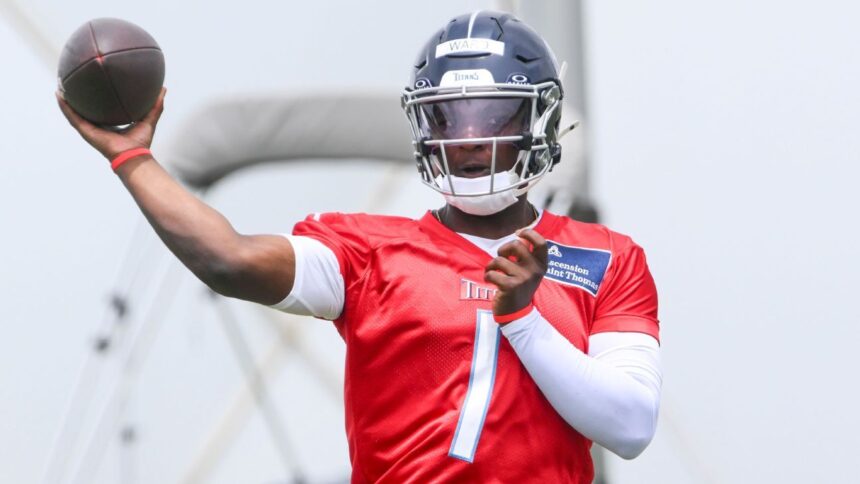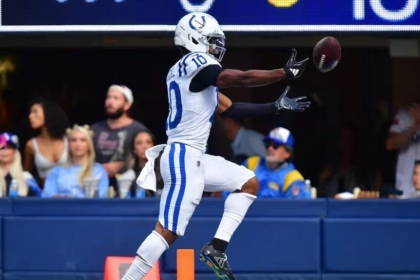Detailed Analysis of the Quarterbacks Selected in the 2025 NFL Draft
Although the quarterback class of the 2025 NFL draft didn’t have as many high-level prospects as the previous year, 13 quarterbacks were selected throughout the seven rounds. Two passers were chosen in the first round, and at least one of those selected on the second day has a good chance of starting in Week 1.
Next, we examine how each quarterback adapts to their new team, analyzing their fit within the scheme and their potential for success in the professional arena. In addition, their possible statistics for their first year are projected.
- Cam Ward, Tennessee Titans (No. 1)
- Jaxson Dart, New York Giants (No. 25)
- Tyler Shough, New Orleans Saints (No. 40)
- Jalen Milroe, Seattle Seahawks (No. 92)
- Dillon Gabriel, Cleveland Browns (No. 94)
- Shedeur Sanders, Cleveland Browns (No. 144)
- Kyle McCord, Philadelphia Eagles (No. 181)
- Will Howard, Pittsburgh Steelers (No. 185)
- Riley Leonard, Indianapolis Colts (No. 189)
- Graham Mertz, Houston Texans (No. 197)
- Cam Miller, Las Vegas Raiders (No. 215)
- Kurtis Rourke, San Francisco 49ers (No. 227)
- Quinn Ewers, Miami Dolphins (No. 231)
Quarterback Analysis by Round
First Round Selections
Cam Ward, Tennessee Titans (No. 1)
Fit in Tennessee: Following the failed experiment with Will Levis, the Titans sought a change led by new general manager Mike Borgonzi. Ward, with his playmaking ability, confidence, and talent for throwing the ball, could start immediately. Brian Callahan’s scheme, based on rhythm and precision, will require Ward to improve his consistency and accuracy. However, his adaptability in college suggests great potential.
How the Titans Can Ensure Their Success: Maximizing Ward’s potential by adapting passing concepts to his strengths. The similarity between the offense he played in Miami and Callahan’s in Tennessee is a good starting point. Stability in their environment is needed for long-term success, so the front office’s patience with Callahan and Ward will be key.
Area where he could lead the league in five years: Touchdown passes outside the pocket. Ward stands out for his ability to create plays outside the original design, extending plays and generating big gains.
2025 Projection: 3,391 passing yards, 20 touchdowns, 13 interceptions (265 rushing yards, three rushing touchdowns).
Jaxson Dart, New York Giants (No. 25)
Fit in New York: Brian Daboll is looking for a quarterback capable of throwing the ball deep, and Dart has the arm strength and touch to connect with his receivers, such as Malik Nabers. With Russell Wilson and Jameis Winston signed to short-term contracts, Dart could have a year of learning to adapt to Daboll’s scheme, which would prepare him to be a starter in 2026.
How the Giants can secure their success: The presence of Wilson and Winston will allow Dart to learn from his teammates and the coaching staff. Daboll and Tierney have been key in Josh Allen’s development, and offensive coordinator Mike Kafka in Patrick Mahomes’ development program. This ensures a solid plan to prepare Dart.
Area where he could lead the league in five years: Passes of 20+ yards. Dart was second in the FBS with 35 passes of 20+ yards, which adds a new dimension to Daboll’s game.
2025 Projection: 1,991 passing yards, 10 touchdowns, eight interceptions (184 rushing yards, two rushing touchdowns).
Tyler Shough, New Orleans Saints (No. 40)
Fit in New Orleans: With the recent retirement of Derek Carr, a training camp battle is expected between Shough and Spencer Rattler. Shough, with experience and knowledge of the game, fits well in the offense of new coach Kellen Moore, looking to throw the ball on time and with rhythm.
How the Saints can secure their success: Carr’s retirement benefits Shough, avoiding questions about his competition. This allows the Saints to adapt the offense to their young quarterbacks. They need more impact players around their rookie quarterback.
Area where he could lead the league in five years: QBR on play-action plays. Shough is comfortable turning his back to the defense and resetting his gaze to throw, which allows him to excel in attacks with fake handoffs.
Projection for 2025: 3,025 passing yards, 14 touchdowns, 12 interceptions (206 rushing yards, two rushing touchdowns).
Intermediate Round Selections
Jalen Milroe, Seattle Seahawks (No. 92)
Fit in Seattle: Milroe, with his explosiveness and ability to create plays with his legs and throw accurate deep passes, fits well. Although Sam Darnold is the undisputed starter, Milroe could participate in specific plays that take advantage of his running ability and strong arm.
When he could enter the field: Immediately, in a special role. He needs to improve as a passer, so he won’t challenge Darnold as a starter. Seattle plans to use Milroe in some plays per game to take advantage of his running ability. The 2025 season will serve to evaluate his development.
Dillon Gabriel, Cleveland Browns (No. 94)
Fit in Cleveland: Kevin Stefanski’s offense works best with West Coast roots, which implies a passer who plays on time and throws the ball quickly and efficiently. Gabriel, who relies on anticipation and timing, fits this profile. Despite his size, his accuracy on short and intermediate passes projects him well for the next level.
When he could enter the field: Although Shedeur Sanders made headlines, the Browns valued Gabriel. With veteran quarterbacks on the team, Gabriel has a lot of experience. He could have opportunities this season if the offense struggles.
Shedeur Sanders, Cleveland Browns (No. 144)
Fit in Cleveland: Sanders joins a group of quarterbacks that includes veterans and another rookie. His accuracy and composure fit well in Stefanski’s offense. Sanders had a high completion percentage, which should be an advantage.
When he could enter the field: Having been chosen behind Gabriel adds uncertainty. He will probably start training camp as the fourth quarterback. He could have a longer path to the field unless he surpasses the competition.
Late Round Selections
Kyle McCord, Philadelphia Eagles (No. 181)
Philadelphia Fit: McCord, with his ability to make quick decisions, will compete for the backup position behind Jalen Hurts. McCord will have the opportunity to develop in a group of quality quarterbacks.
Will Howard, Pittsburgh Steelers (No. 185)
Fit in Pittsburgh: Howard is an ideal option. He has good size and mobility, and continues to improve as a passer.
Riley Leonard, Indianapolis Colts (No. 189)
Indianapolis Fit: Leonard will have the opportunity to develop. He is a dual-threat quarterback who can take advantage of quick passes. He could be the third quarterback on the active roster and could become the primary backup in the future.
Graham Mertz, Houston Texans (No. 197)
Houston Fit: Mertz will compete for the third quarterback position. With Davis Mills about to become a free agent, Houston hopes Mertz will become a quality backup for Stroud.
Cam Miller, Las Vegas Raiders (No. 215)
Fit in Las Vegas: Miller will enter a situation where he can develop behind the starter Geno Smith. The Raiders value his accuracy. Miller and Carter Bradley will compete for the third quarterback position.
Kurtis Rourke, San Francisco 49ers (No. 227)
Landing Spot in San Francisco: Rourke is in a great spot, as the 49ers are known for developing passers. The ACL injury could delay his participation. He would compete for the No. 3 spot on the depth chart.
Quinn Ewers, Miami Dolphins (No. 231)
Fit in Miami: Ewers fits perfectly into Mike McDaniel’s offense, which is based on quick passes. He could compete for the backup position to Tua Tagovailoa.








